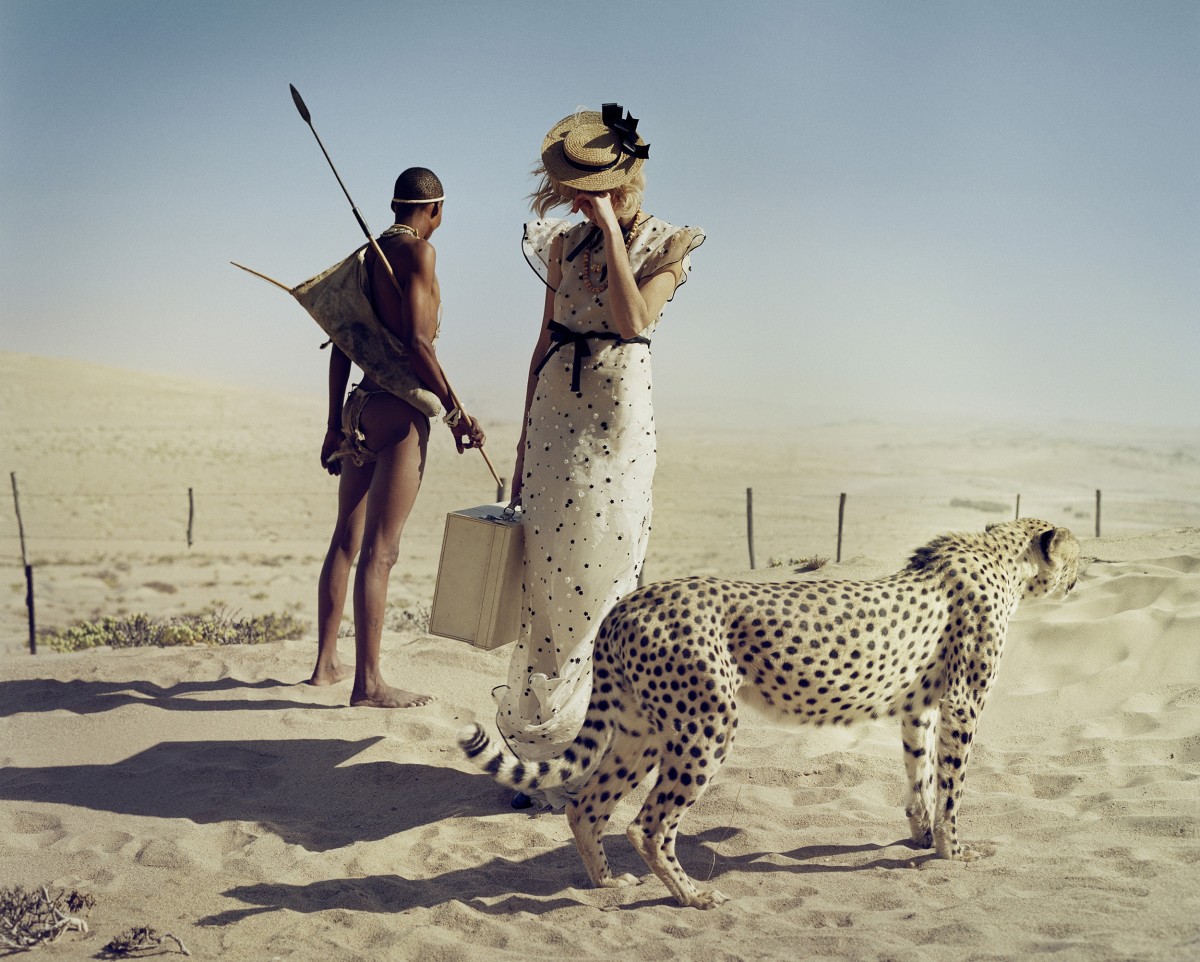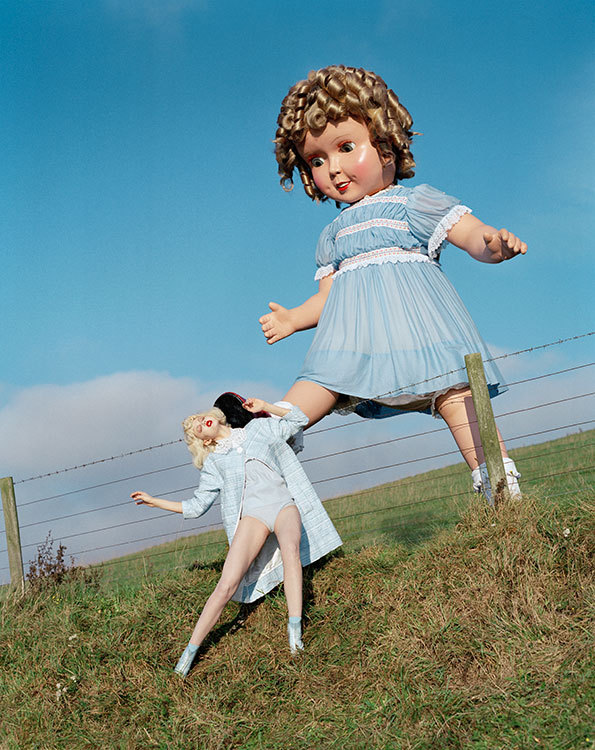The Archives: Tim Walker
'Agyness Deyn, Simon and Kiki in sandstorm' 2011 © Tim Walker
Michael Hoppen on Tim Walker
Tim Walker's photographs have entranced the readers of Vogue, month by month, for over a decade. Extravagant staging and romantic motifs characterise his unmistakable style. On gradu- ation in 1994, Walker worked as a freelance photographic assistant in London before moving to New York City as a full time assistant to Richard Avedon. On returning to England he initially concentrated on portrait and documentary work for UK newspapers. At the age of 25 he shot his first fashion story for Vogue, and has continued to work to much acclaim ever since.
What makes Tim unique?
Unique is a big, big word. “What makes Tim special?” is probably easier to answer. He’s not only a wonderful human being, but he’s also very generous and a real innovator. He makes things happen and, unlike a lot of photogra- phers today who let the computer do a lot of the work, everything you see in one of Tim’s pictures is done in front of the camera. There is no Photoshop, no trickery.
None at all?
None at all. There is one picture in the new book where a little pipe is being retouched out, but 99.999 per cent of Tim’s pictures are exactly as they look in the can. There is no trickery. No Photoshop. He makes everything him- self. Everything is set up. If it happens, if it moves, if it glows, if it slides, if it’s giant, if it’s miniature. You know that doll? . . . She is about 18-20 feet high.
'Kinga Razjak in a flying saucer with members of the West Percy hunt' 2009 © Tim Walker
From what I’ve heard, he’s going through a transition — from big productions to these simple white backgrounds. How has his production or distribution changed?
He’s always done what he does. The fact that he’s willing to release prints today is quite unusual. Until recently, he didn’t want to release his work in print form.
Tim worked with Richard Avedon. How does Tim’s work with the white background differ from Avedon’s?
Avedon did it in black and white on 10 x 8. Tim is doing it in bright, glorious color. I think there’s an element of Avedon up to a point in some of Tim’s work, where there’s drama and theater, but it’s so beautifully executed. It’s not forced. What the white backdrop is allowing Tim to do is examine detail in the subject’s face . . . Tim is interested in the longevity of character. This is why Avedon, Penn, and a lot of portrait photographers choose a simple back- drop. The eyes are not allowed to roam anywhere else. I think that’s almost a self-imposed discipline rather than somebody saying: “I want to copy somebody else.” Tim has become interested in people’s faces, expressions, the way they react to him. This is not a passing phase . . . I like the fact that he doesn’t risk his morals. He’s continu- ously pushing himself.
'Giant Doll kicks Linsey Wixson' 2011 © Tim Walker
Tim is known as a storyteller. Don’t you think that all good photographs tell a story? What sets his story apart?
You just added the word, which of course is the most im- portant word: all good photographs tell a story; not all photographs tell a story. Yes, I think you’re absolutely right, but how many good photographs are there in the world or how many good photographs could you or I take? Not many. I think people try to tell stories, even if it’s simply taking a picture of a family at Christmas. They’re trying to say: “We had a great time!” If you saw my Christmas photographs, it looks like a funeral . . . Tim manages to ll his photographs with stories and qualities and layers, which encourages people to question things, which is why we’re having this conversation.
'Karlie Kloss and broken humpty dumpty' 2011 © Tim Walker
Do you make any distinction between ne art photographers and fashion photographers?
Absolutely. I think Tim is an artist that a lot of fashion people have been able to hang their work on. In a sense, it’s a stage set. Tim’s imagination is there. Set designers and certain people in fashion like to bring their stories. When you talk to a designer they’ll talk about their ‘winter collection’, and I like that conversation. It’s similar. Now, I’m not comparing Tim to Irving Penn in any way, but when you read and hear about the stories and letters be- tween Issey Miyake and Irving Penn . . . it is a con uence of ideas and minds coming together. Tim needs great imagination from a fashion designer and they need great imagination from Tim. If it works, what you end up with is a wonderfully beautiful — and also informative — picture which goes beyond simply selling the coat or selling the handbag, which, I’m afraid to say is what a lot of fashion photography is all about today . . . I’m not moralizing it, but I’m saying I don’t think that’s Tim’s style.
To read the full article click here
'Kirsi Pyrhonen on wild yak' 2011 © Tim Walker












